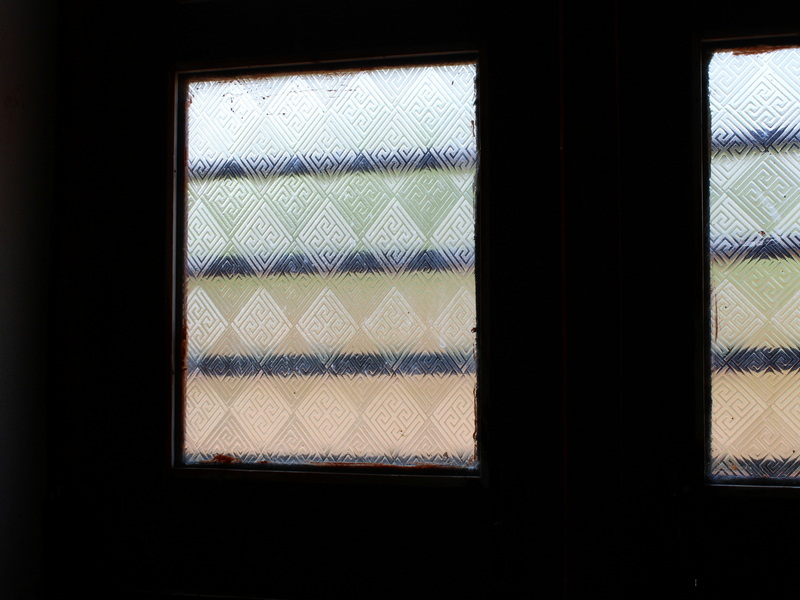English 




Views: 222 Author: Astin Publish Time: 2025-02-16 Origin: Site



Content Menu
● Understanding the Benefits of Aluminum Foil on Windows
● Installation Methods for Aluminum Foil on Windows
● Advanced Installation Techniques
>> Using Cardboard or Foam Board
>> Maintaining a Clean Appearance
● Potential Drawbacks of Using Aluminum Foil
● Alternatives to Aluminum Foil
>> Window Film
>> Insulated Curtains or Blinds
>> Weather Stripping and Caulking
● Environmental Considerations
● FAQ
>> 1. Can I use regular kitchen-grade aluminum foil?
>> 2. Should I place the foil inside or outside my windows?
>> 3. How long does aluminum foil last when used on windows?
>> 4. Will using aluminum foil reduce my energy bills?
>> 5. Is it safe to use aluminum foil on double-pane windows?
Aluminum foil is a versatile household item that can serve various purposes beyond cooking and food storage. One of its practical applications is in home insulation, particularly for windows. This article explores how to effectively use aluminum foil on windows, discussing its benefits, installation methods, and potential drawbacks, providing a comprehensive guide to help you decide if this is the right solution for your home.

Aluminum foil is known for its excellent reflective properties. It can reflect up to 96% of radiant heat, making it an effective barrier against solar radiation. Here are some key benefits of using aluminum foil on windows:
By reflecting heat away from your home, aluminum foil helps reduce the reliance on air conditioning systems during hot weather. This can lead to significant savings on energy bills. The principle behind this is simple: radiant heat from the sun is a major contributor to indoor temperature increase, especially during peak sunlight hours. By reflecting this heat before it penetrates the window, the internal environment remains cooler, reducing the workload on your cooling systems. Studies have shown that reflective window treatments can decrease energy consumption by as much as 30%, depending on factors such as window size, orientation, and climate.
Aluminum foil is inexpensive and readily available at most grocery stores. This makes it an accessible option for homeowners looking to improve their home's energy efficiency without breaking the bank. Compared to other window insulation methods, such as specialized films or insulated curtains, aluminum foil offers a budget-friendly alternative. The low initial cost and ease of installation make it an attractive option for those seeking immediate improvements without significant financial investment.
Aluminum foil can block unwanted light from entering your home, creating a dark environment that is conducive to sleep. It also provides privacy by preventing outsiders from seeing inside. This can be particularly useful in bedrooms or media rooms where light control is essential. Unlike sheer curtains or blinds that may allow some light to filter through, aluminum foil provides complete light blockage, creating a blackout effect.
While commonly used in summer to keep homes cool, aluminum foil can also help retain indoor heat during winter months by reflecting warmth back into the room. This dual functionality makes it a year-round solution for temperature regulation. In colder climates, the foil reflects heat generated by your heating system back into the room, preventing it from escaping through the windows.
UV rays from sunlight can damage furniture and flooring over time. Aluminum foil acts as a barrier against these harmful rays, helping to preserve your home's interior. Prolonged exposure to UV radiation can cause fading, discoloration, and degradation of materials. By blocking these rays, aluminum foil extends the lifespan of your valuable possessions.
Installing aluminum foil on windows is a straightforward process that requires minimal tools. Here's how to do it effectively:
1. Choose the Right Foil: Use heavy-duty aluminum foil rather than standard kitchen-grade foil for better insulation and durability. Heavy-duty foil is thicker and more resistant to tearing, making it a better long-term solution.
2. Prepare the Window Surface: Clean the window surface thoroughly to ensure that the foil adheres properly. Use a glass cleaner to remove any dirt, dust, or grease that may prevent adhesion.
3. Cut the Foil to Size: Measure your window dimensions and cut the aluminum foil accordingly, ensuring that it covers the entire glass area. Leave a small overlap to allow for secure attachment.
4. Apply the Foil: For optimal results, place the shiny side of the foil facing outward. This orientation reflects more sunlight away from your home. The reflective surface is specifically designed to bounce back radiant heat, maximizing its effectiveness.
5. Secure the Foil: Use tape or adhesive spray to secure the edges of the foil to prevent it from peeling off due to wind or rain. Choose a tape or adhesive that is suitable for outdoor use and resistant to temperature fluctuations.
6. Regular Maintenance: Check periodically for wear and tear; replace any damaged sections promptly to maintain effectiveness. Small tears or punctures can compromise the foil's ability to reflect heat, so prompt repairs are essential.

For those seeking more refined installation techniques, here are a few additional tips:
Cut a piece of cardboard or foam board to the exact size of your window. Wrap the aluminum foil tightly around the board and secure it with tape or adhesive. Then, place the board inside the window frame. This method provides a more rigid and durable solution that is easier to install and remove.
When using adhesive spray, apply a thin, even coat to the window surface and the back of the aluminum foil. Allow the adhesive to become slightly tacky before attaching the foil to the window. This will create a stronger and more durable bond.
Attach small magnets to the corners of the aluminum foil-covered boards. Place corresponding magnets on the window frame. This allows you to easily attach and remove the panels as needed, providing flexibility in light and temperature control.
When applying the aluminum foil, use a squeegee or a flat object to smooth out any air bubbles. This will ensure that the foil is in full contact with the window surface, maximizing its effectiveness.
Handle the aluminum foil carefully during installation to prevent tears. If a tear occurs, patch it with tape or replace the damaged section.
Although aesthetics can be a concern, regular cleaning of the exterior foil surface can help maintain a more presentable appearance.
While there are many benefits to using aluminum foil on windows, there are also some potential drawbacks to consider:
Covering windows with aluminum foil may not be visually appealing. Homeowners should weigh the benefits against aesthetic preferences. The appearance of aluminum foil can be stark and industrial, which may not complement the overall décor of your home.
If applied incorrectly (e.g., on the inside of double-pane windows), aluminum foil can trap heat between panes, potentially causing damage. This can lead to increased pressure within the window unit, potentially causing cracks or seal failures. Always apply the foil to the exterior surface to avoid this risk.
Depending on weather conditions, aluminum foil may need replacement every few weeks or months if it develops holes or tears. Exposure to sun, rain, and wind can degrade the foil over time, reducing its effectiveness.
If you find the drawbacks of using aluminum foil too significant, here are some alternative window insulation methods:
Specialized window films offer similar benefits to aluminum foil, such as heat reflection and UV protection, but with a more aesthetically pleasing appearance. These films are available in various tints and finishes to suit your preferences.
Insulated curtains and blinds are designed to block light and provide thermal insulation. They come in a wide range of styles and colors, making them a more attractive option than aluminum foil.
Cellular shades, also known as honeycomb shades, have a unique design that traps air within their cells, providing excellent insulation.
Sealing gaps and cracks around your windows with weather stripping and caulking can prevent drafts and improve energy efficiency.
While aluminum foil is recyclable, its production process can be energy-intensive. Consider the environmental impact of using aluminum foil and explore more sustainable alternatives if possible. Reusing aluminum foil for multiple purposes can also help reduce waste.
Using aluminum foil on windows is a practical and cost-effective method for improving energy efficiency in homes. Its reflective properties help keep indoor temperatures comfortable while providing privacy and UV protection. However, homeowners should consider aesthetic implications and installation techniques to avoid potential damage to their windows. With proper application and maintenance, aluminum foil can be an effective tool in managing indoor climate control. Ultimately, the decision to use aluminum foil on windows should be based on a careful assessment of your individual needs, preferences, and circumstances. By weighing the benefits against the drawbacks and exploring alternative solutions, you can make an informed choice that optimizes energy efficiency and enhances your home environment.

Yes, but heavy-duty aluminum foil is recommended for better insulation and durability. It will withstand weather conditions better and provide longer-lasting benefits.
For optimal results, apply it on the outside of the window to reflect sunlight before it enters your home. Internal application can lead to heat build-up and potential window damage.
It can last several weeks to months depending on weather conditions but may need replacement if damaged. Regular inspection and maintenance are crucial for sustained effectiveness.
Yes, by reflecting heat away from your home, it can lower air conditioning costs and improve overall energy efficiency. The exact savings will depend on factors such as climate, window size, and insulation levels.
Yes, but be cautious about applying it internally as it may trap heat between the panes. Always apply it externally to avoid potential damage to the window seals.
[1] https://www.tradestoreonline.co.uk/a-guide-to-different-uses-of-aluminium-foil/
[2] https://www.gm-cx.com/does-aluminum-foil-keep-heat-out-of-windows.html
[3] https://gist.github.com/allenfrostline/c6a18277370311e74899424aabb82297
[4] https://www.tomsguide.com/opinion/i-just-beat-the-heat-with-a-dollar2-roll-of-aluminum-foil-heres-how
[5] https://discover.hubpages.com/living/Reasons-Not-to-Tape-Aluminum-Foil-on-Your-Windows
[6] https://b3logfile.com/pdf/article/1653485885581.pdf
[7] https://www.housedigest.com/1360647/aluminum-foil-lining-windows-mistake/
[8] https://www.tiktok.com/discover/what-is-the-purpose-of-putting-aluminum-foil-on-your-windows
Top Aluminum Furnitures Manufacturers and Suppliers in Czech Republic
Top Aluminum Furnitures Manufacturers and Suppliers in Poland
Top Aluminum Furnitures Manufacturers and Suppliers in Belgium
Top Aluminum Furnitures Manufacturers and Suppliers in Finland
Top Aluminum Furnitures Manufacturers and Suppliers in Denmark
Top Aluminum Furnitures Manufacturers and Suppliers in Greece
Top Aluminum Furnitures Manufacturers and Suppliers in Portugal
Top Aluminum Furnitures Manufacturers and Suppliers in Austria
Top Aluminum Furnitures Manufacturers and Suppliers in Norway
Top Aluminum Furnitures Manufacturers and Suppliers in Sweden
